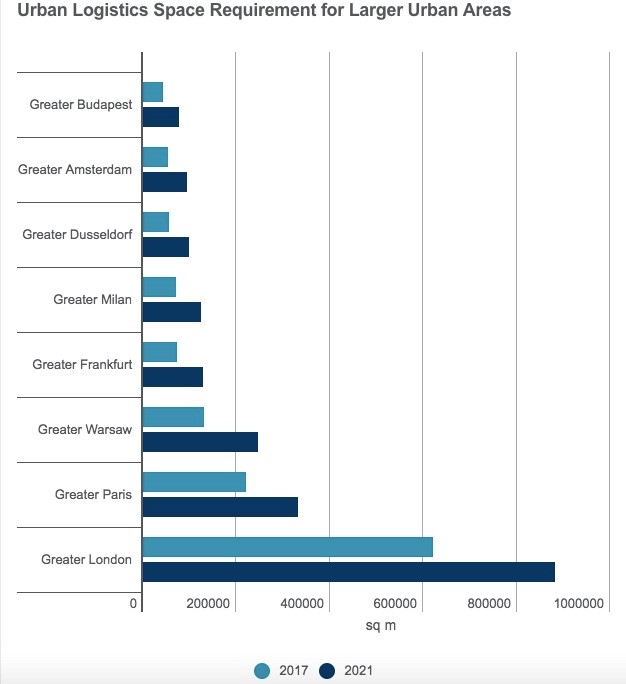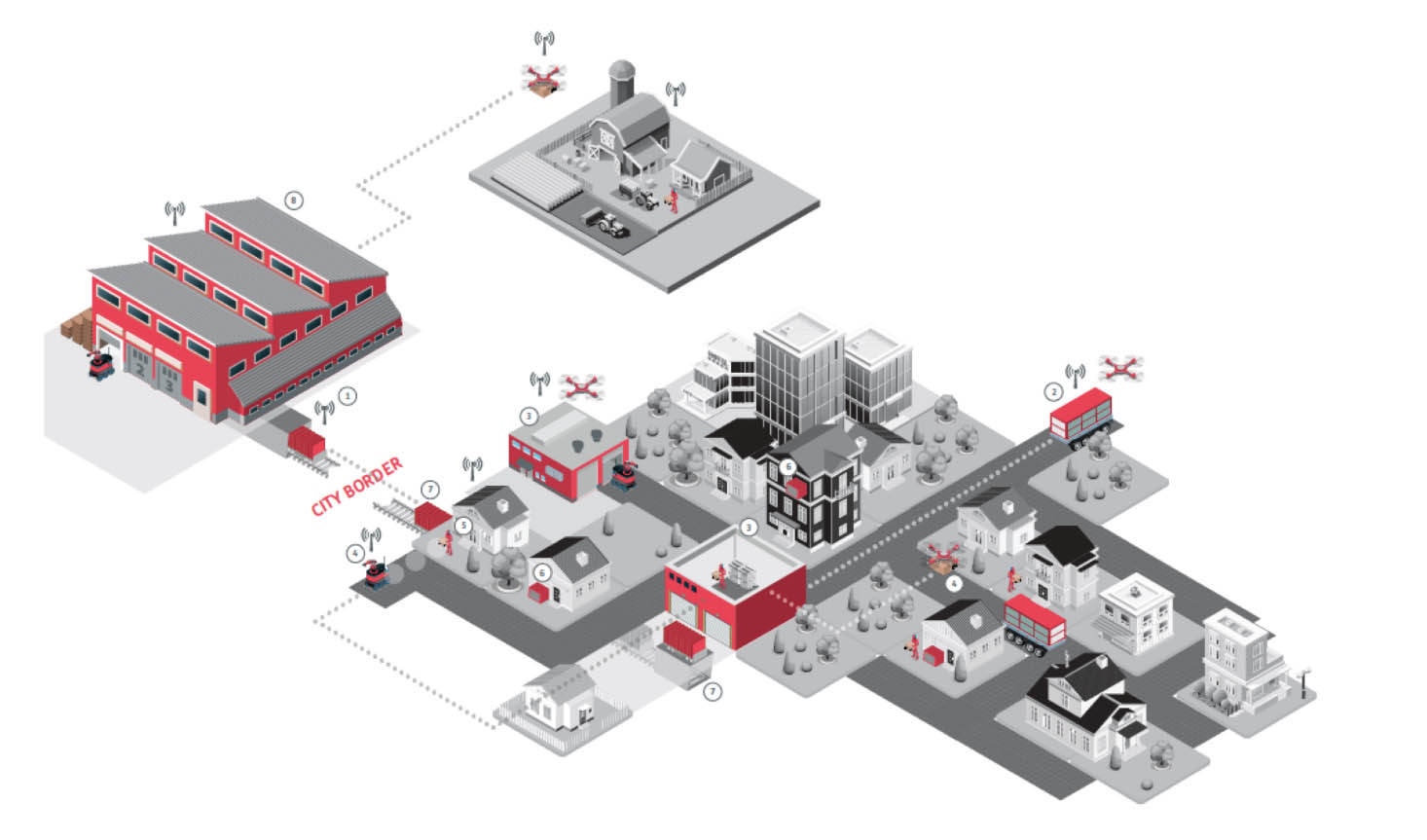Thought Leadership Corner: COLLABORATING TO CONNECT THE FIRST AND LAST MILE
Your delivery network is not your delivery network. You might have your own warehouses and DCs, maybe even some of your own vehicles. But ultimately you’re sharing resources with everyone else in retail logistics. From relationships with couriers to the roads down which delivery vans travel, very little is genuinely and exclusively yours across the delivery network.
This is a truth that tends to reveal itself during peak capacity periods. At Black Friday when the majority of retailers are running promotions, enormous volumes of parcels get pushed into the overall delivery network. Ultimately this creates bottlenecks (there’s a finite number of people who can work in DCs and/or drive vans, and a finite amount of roads for them to drive down). These bottlenecks cause delays and problems that have repercussions. If retailer A causes courier X to struggle with capacity because of high volumes of Black Friday sales, retailers B, C, and D – who were also relying on courier X – will get caught up in the subsequent delays, even if they weren’t running Black Friday promotions of their own.
Avoiding this kind of scenario, not just during peak but year-round, is going to call for a new way of looking at the delivery network. Maybe it’s not a network, but a network of networks, or an ecosystem in which collaboration between traditional rivals achieves benefits for all.
A new kind of space race
Shopping habits have changed over the last few years, particularly in the grocery sector, where little and often is the new normal. But replenishing smaller shops on a more frequent basis is harder and more costly than sending large lorries from an enormous DC to a vast hypermarket. Unless you can easily get a large lorry parked right outside the store (such as at a petrol station forecourt), you have to use smaller vehicles to get to smaller stores to meet the needs of the little and often shopper. And that increases your costs all the way back up your logistics chain.
Research into the warehouse sector by the real estate group Savills found that more than half of all the demand for such space is currently coming from the retail sector. That’s up from 25% in 2017, demonstrating that “many retailers are continuing to reorganise and restructure their supply chains as they grapple with structural changes to shopping habits of the UK consumer.”
That restructuring isn’t going to be easy, however. More research – this time from US-based commercial property specialist, Cushman & Wakefield – has looked at the need for urban logistics space in particular. This is the kind of facility desperately needed to address the challenges of the modern last mile. The need for space in urban areas is greater in London than any other major European population centre, and is growing faster too.

Source: Urban Space Model, Cushman & Wakefield
New models to learn from
The Argos delivery model, which was completely overhauled around four or five years ago, is a potential blueprint for success. The hub-and-spoke model Argos adopted sees stock held at larger stores being sent to smaller ones, and also out to customers (same-day delivery became possible only because of the hub-and-spoke model). Space is shared between stores and with the advent of home delivery, greater use is made of the fleet of vehicles shifting stock between those stores. Access to stock went up, availability for shoppers was improved, and the enhanced utilisation of space (in terms of both storage and transport) meant a reduction in cost.
If only that sort of model was more widely available. Well, perhaps it could be. “Hyper-local fulfilment and delivery is the future in urban logistics,” according to Sebastian Steinhauser, the CEO & Founder of Parcelly, speaking at last month’s Leaders in Logistics conference. Technology has revolutionised the way people shop, as we all know. The nature of the first mile has been changed completely – it’s wherever the customer is. That same technology can also help bring about substantial changes in the last mile, too.

Source: Swisslog, Kuka Group, 'FUTURE PERSPECTIVES: PLANNING FOR THE WAREHOUSE OF THE FUTURE'
While the need for greater investment and development of urban logistics facilities will remain, there are solutions waiting to be found by linking supply with demand, creating value out of unused space and alleviating bottlenecks at the same time.
The Argos model only works because of the streamlined and reliable view of stock and capacity across the entire store and logistics estate. The wider retail ecosystem could follow suit by bringing spare logistics capacity and capability to retailers who need it – joining businesses together to benefit each other as well as shoppers.
Is this possible? Yes, absolutely.
But it calls for a change in attitude. If you haven’t got space to hold stock on-site you may feel hyper-local fulfilment is for others and not for you. However, sometimes you just have to be prepared to make a change; being creative and more open in your approach can reveal new solutions.
Sebastian Steinhauser, CEO & Founder at Parcelly highlights: 'We continue to see supply chain demands changing in line with current society, shopping and emerging technology trends. Urban logistics with hyper-local fulfilment is encompassing the growing expectation of customers for on-demand delivery options at check-out, the supply chain's need for efficiency and optimisation, as well as societies' drive towards greener and more sustainable fulfilment solutions. Global eCommerce is forecasted to reach 2.8trillion USD this year with no end of growth in sight and with same day deliveries increasingly becoming the norm, collaboration between stakeholders along the supply chain is imperative. Not only in view of a limited amount of transport routes and human plus physical resources available, but also the 'accepted' delivery time it takes for a retailer to fulfil to their end customer.
Moving goods closer to the customer helps cities run faster, more cost-effective and most importantly sustainable. Parcelly has always been an advocate of collaboration, control and convenience. Our business model encompasses smart, easy to implement technology, a carrier and retailer agnostic network of nationwide Parcelly (fulfilment-) locations and the drive to make a social and environmental impact - one parcel at the time. We see our dynamic network of PUDO locations as an enabler for hyper-local delivery solutions, accessible to all players in the market, and a hub for storing, consolidating, cross-docking and mini-warehousing of parcels. The benefits of such a system are manifold, with advantages for retailers (increased customer satisfaction & lower costs of fulfilment), couriers (fewer delivery attempts & increased margins), customers (increased choice, control & convenience), the local highstreet (additional footfall & revenue stream) and ultimately the environment (lower traffic congestion & better air quality).
The new age of urban logistics driven by digitalisation has just started - and we're excited to be at the forefront of a collaborative approach to reinvent traditional supply chain models.'
This website and its content is copyright of Parcelly - © Parcelly Ltd. 2018. All rights reserved. You may not, except with our express written permission, distribute or commercially exploit the content. Nor may you transmit it or store it in any other website or other form of electronic retrieval system.
2014-2024, Parcelly Ltd, All Rights Reserved

